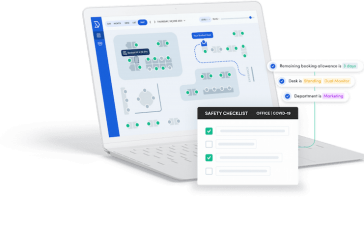Are you looking for an effective way to track and organize potential candidates for your organization? Employing the use of a recruiting CRM (Customer Relationship Management) system could be the answer you are looking for. A recruiter crm software allows you to easily manage and store the entire hiring process in one place, from the moment you create a job listing to the moment you make an offer. With a recruiting CRM, you can save time and energy by automating various aspects of the hiring process, while also ensuring that no detail is overlooked. You can quickly access important information such as candidate resumes, interview notes, and hiring decisions, allowing you to make informed decisions and move quickly when it comes to hiring the right person for the job. With the help of a recruiting CRM, you can easily track and organize candidates and manage the entire hiring process more efficiently.
Benefits of Using a Recruiting CRM
A recruiting CRM can help you save time and streamline the hiring process by making it easier for you to stay organized and manage progress. A recruiting CRM can also help you: A recruiting CRM can also help you determine if candidates are a good fit for the job by enabling you to track candidate information and communication details, facilitating collaboration across your organization. This can allow you to identify trends, evaluate the effectiveness of your hiring strategy, and make data-driven decisions that will help you hire the right candidate for the job.
How to Choose a Recruiting CRM
When you are looking for a recruiting CRM, it is important to select a system that is flexible and will be able to adapt to your organization’s needs. Before you begin the search for a new recruiting CRM system, it is important to identify and prioritize your organization’s hiring needs so that you can select a system that will be able to meet those needs. Here are some things to consider when selecting a recruiting CRM: Additionally, you will also want to consider what type of system you would like to use, either on-premises software or a cloud-based system. The type of recruiting CRM you choose will depend on a variety of factors, such as your budget and the needs of your organization.
Features of a Recruiting CRM
When selecting a recruiting CRM, it is important to select one that offers the features and functionality that best suit your organization’s hiring needs. Some of the features you may want to look for in a recruiting CRM include:
Setting Up Your Recruiting CRM
Once you have selected a recruiting CRM and signed up for the system, it is time to set it up and begin adding candidates and tracking their progress through the hiring process. To set up your recruiting CRM, you will want to do the following:
Automating the Recruiting Process with a CRM
With a recruiting CRM, you will want to find ways to automate and streamline the recruiting process as much as possible. A recruiting CRM can help you do this by allowing you to create custom fields and use the system to create and send automatic emails to candidates. This can allow you to automate various aspects of the hiring process, while also ensuring that no detail is overlooked. For example, you can use your recruiting CRM to automatically create email messages to candidates whenever they update their information in the system. You can also set up your recruiting CRM to receive and organize candidate resumes. Here is how this can be done:
Tracking and Organizing Candidates with a Recruiting CRM
Once you have started tracking candidates with your recruiting CRM, you will want to regularly add information to each candidate’s profile in the system. This will enable you to stay organized and keep track of each candidate’s progress as they move through the hiring process. Here is what you will want to track for each candidate:
Integrating Your Recruiting CRM with Other Tools
One option for integrating your recruiting CRM with other tools is by connecting it to your email system. You can do this by forwarding all candidate emails to your recruiting CRM system. You can also create triggers or rules in your recruiting CRM so that whenever a candidate attaches a resume or other information to an email, it is automatically added to their profile in the system. You can also integrate your recruiting CRM with other tools by adding other tools to your recruiting CRM. Here are some tools you may want to integrate with your recruiting CRM:
Best Practices for Using a Recruiting CRM
Before beginning to use your recruiting CRM, you will want to set up candidate and hiring templates. This will allow you to easily edit and customize these templates as needed. It is important to regularly review the progress of all candidates in your recruiting CRM so that you can ensure that no candidate falls through the cracks. You can do this by regularly reviewing the progress of each candidate in your system, as well as regularly reviewing hiring reports that your recruiting CRM system may offer. It is also important to regularly clean up old candidates and/or hiring information in your recruiting CRM so that you do not end up with a cluttered and disorganized system. Last, but not least, it is important to keep the various stakeholders involved in the hiring process informed about the state of the hiring process.
Conclusion
A recruiting CRM like Recruiterflow is an excellent tool for hiring managers and HR professionals. It can help streamline the hiring process so that hiring managers and HR professionals can focus on finding the best candidates as quickly as possible. With a recruiting CRM, hiring managers and HR professionals can track and organize candidates, receive and manage applications, and keep track of hiring progress. A recruiting CRM can also help hiring managers and HR professionals automate the hiring process so that they can focus on the most important aspects of the hiring process.









